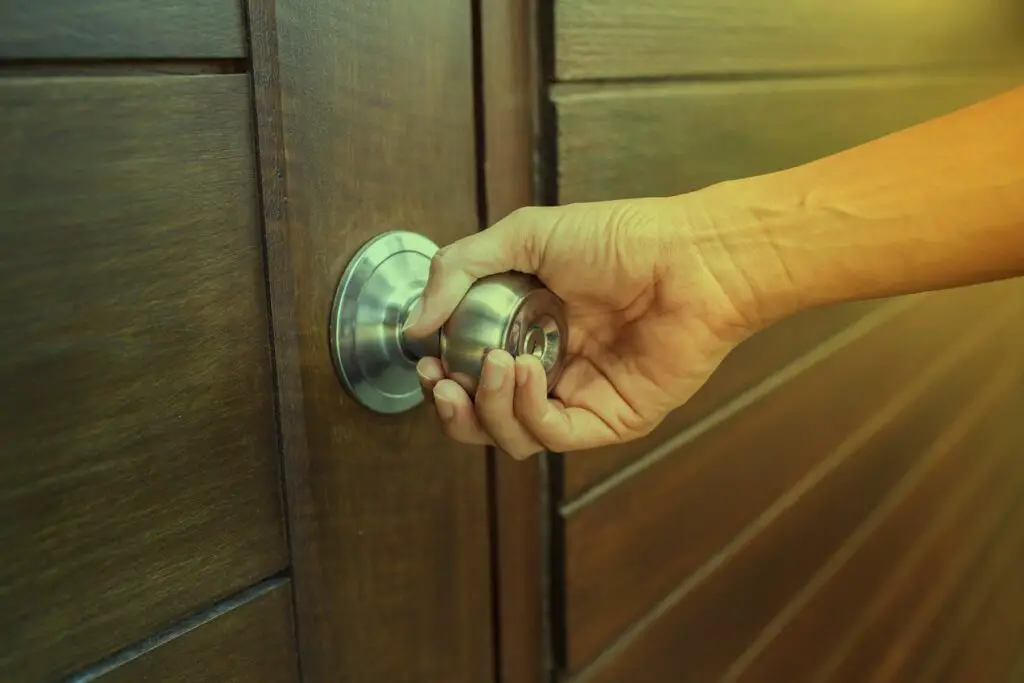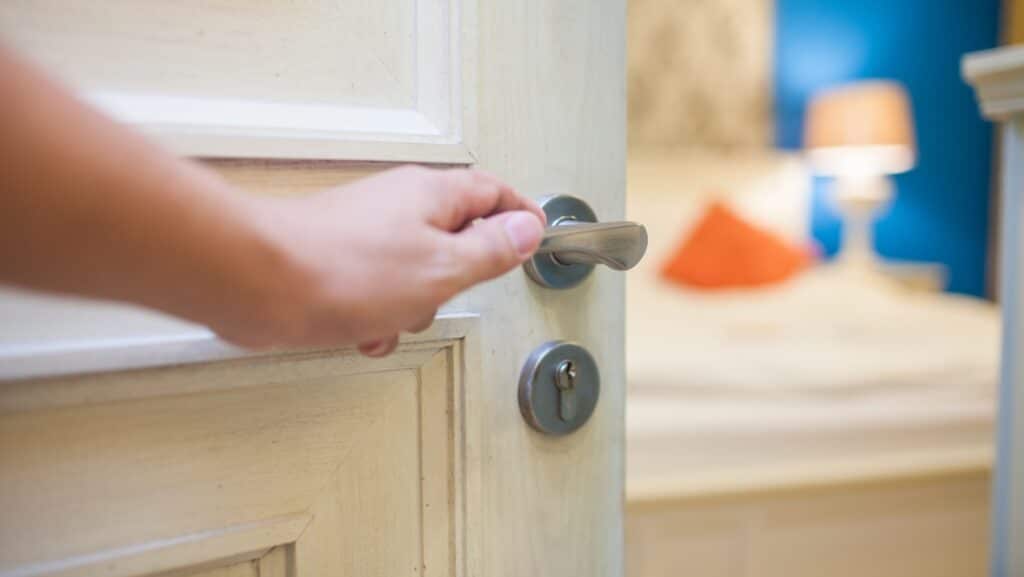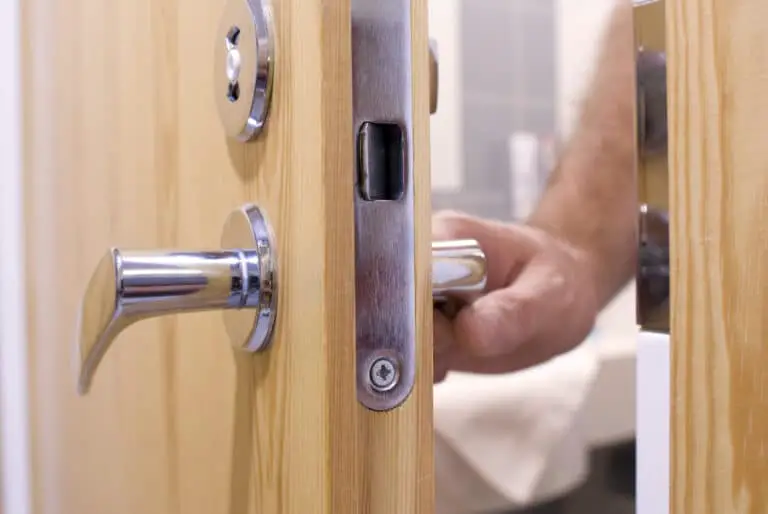Introduction
Have you ever been locked out of a room with no way in? It might be irritating and stressful, especially if you need anything crucial inside. Knowing how to open a locked room door can save you time, money, and hassle, whether you accidently locked it or the lock is broken. Opening a locked room door can be easy with the correct equipment and tactics. Assess the situation and identify the lock before starting. Deadbolts, knob locks, and keycard locks all require different methods to open.
If you’re dealing with a traditional deadbolt lock, one of the most common types of locks found on room doors, you may be able to open it using a credit card or a similar thin, flexible object. This technique, known as “”carding,”” involves sliding the card between window house the door and the door frame, near the latch, and using it to push the latch back. It’s important to note that this method may not work on all deadbolt locks, especially those with a higher level of security.
For knob locks, which are often found on interior doors, a simple tool called a lock pick can be used to manipulate the lock mechanism and unlock the door. Lock picking requires some skill and practice, so it’s important to familiarize yourself with the technique before attempting it on a locked door. There are numerous online resources and tutorials available that can guide you through the process.

How to unlock a lock without the key?
There are various ways to unlock the lock without the key if you lost or locked it. However, only on your own property or with permission should you try to unlock a lock without the key.
Lock pick sets are commonly used to unlock locks without keys. The Lock picking takes time and patience, but with the correct tools and expertise, it can release a lock. Lock pick sets include picks and tension wrenches for manipulating lock pins and springs.
A bump key may unlock a lock without the key. A bump key is a specifically cut key that unlocks locks quickly. To open the lock, insert the bump key and apply pressure to manipulate the pins. However, bump keys should only be used on locks you own or have permission to access.
If lock pick sets or bump keys are unavailable, you can use household items to unlock the lock. Bend a paperclip or bobby pin to make a lock pick. Insert the bent end inside the lock and apply pressure to manipulate the pins and unlock it.
What to do if room is locked?
How To: Get Out Of A Locked Room
- 1) Try to stay calm. While it is quite a strange feeling to be stuck in a small space, relax and stay calm. …
- 3) Call out to get the attention of anyone nearby. Fortunately, there was another person around who was able to help us get out. …
- 5) Try using a credit card or thin plastic object.
If you find yourself in a situation where a room is locked and you are unable to gain access, it can be quite frustrating and even alarming. However, there are several steps you can take to address the issue and hopefully resolve it without too much trouble. It’s important to remain calm and think logically in order to find a solution.
If there are no alternative entrances, try to find a spare key. Look for a spare key in nearby drawers, cabinets, or with other people who may have access to the room. If you are in a hotel or a similar establishment, you can also contact the front desk or management to see if they have a spare key or can provide assistance in unlocking the room.
If you are unable to find a spare key, consider using a lock-picking tool. This option should only be used if you have the necessary skills and knowledge to safely pick a lock. It is important to note that attempting to pick a lock without proper training or authorization may be illegal and can cause damage to the lock or door. If you are unsure or uncomfortable with this method, it is best to seek professional help.
How do you unlock a door without a bobby pin?
Using Paperclips. Next up is the paperclip, and they are actually quite handy at picking basic locks. However, just like the bobby pin, they struggle with tighter keyways and radical warding. To pick a lock with paperclips, you need two tools, a lock pick, and a tension wrench.
Unlocking a door without a bobby pin can be a challenging task, but it is not impossible. There are several alternative methods that can be used to unlock a door when a bobby pin is not available. These methods may require some creativity and resourcefulness, but they can be effective in gaining access to a locked door.
One method that can be used to unlock a door without a bobby pin is by using a credit card or a similar thin, flexible object. To do this, you would need to insert the card between the door and the door frame, near the lock. Then, you would need to wiggle the card up and down while simultaneously pushing the door open. This can help to disengage the lock mechanism and allow the door to be opened.
Another method that can be used to unlock a door without a bobby pin is by using a paperclip or a similar small, thin object. To do this, you would need to straighten out the paperclip and then bend one end into a small hook shape. You would then insert the hooked end of the paperclip into the lock and try to manipulate the internal mechanisms to unlock the door. This method requires some skill and patience, but it can be effective in certain situations.
Is there a key that opens any lock?
A skeleton key (sometimes called a passkey) is a master key with a removed serrated edge that can open multiple locks, most often warded locks. The phrase comes from the key’s reduction to its fundamental elements.
A key that opens any lock is generally called a master key. Master keys are used to open several locks in a system. The concept of a key that opens any lock, regardless of system or brand, is mythical.
Lock mechanisms and configurations require keys. These devices differ by lock type, such as pin tumbler, wafer, or disc detainer. Each lock needs a unique key to align its internal components and open it.
It takes preparation and organization to establish a master key system that opens various locks in a system. Master key systems are utilized in business buildings and residential complexes when residents or staff need to access many locks.
How do you open a door for someone?
When you approach a door that pulls open, reach out to open it then, continuing to hold the door open, stand aside so the person you’re with may enter. When you approach a door that pushes open, go on through as you hold the door, standing aside as you continue to hold it so others may enter.
Opening a door for someone is a simple act of kindness that can make a big difference in someone’s day. It is a gesture that shows respect, consideration, and thoughtfulness towards others. Whether you are opening a door for a stranger, a friend, or a loved one, the act itself is a small but meaningful way to show that you care.
There are a few simple steps to follow when opening a door for someone. First, approach the door and check if someone is behind you or approaching from the opposite direction. If there is someone nearby, hold the door open and wait for them to pass through. This allows them to enter or exit the space without having to struggle with the door themselves.
When opening a door for someone, it is important to be aware of their needs and preferences. For example, if you notice that someone is carrying a heavy load or has their hands full, offer to hold the door open for them for a longer period of time. This small act of assistance can make a big difference in their day and show that you are willing to go the extra mile to help them.
Are there any specific tools or techniques that can be used to unlock a room door?
A locked room door can be unlocked using different tools and methods depending on the lock. Lock pick sets, which contain picks and tension wrenches, are used to manipulate lock pins to unlock doors. The lock is twisted and the door unlocked by inserting these picks into the lock and gently manipulating them like keys.
Lock bumping, which uses a custom bump key to open a door rapidly, is another option. This method uses physics and pin tumbler locks to bump the pins and unlock the door. Lock bumping is prohibited in some places, therefore only use it on locks you own or have authority to unlock.
Are there any potential risks or legal implications associated with attempting to open a locked room door?
Attempting to open a locked room door without proper authorization or legal justification can have potential risks and legal implications. It is important to understand that breaking into someone else’s property without permission is illegal and can result in criminal charges. Therefore, it is crucial to consider the legal implications before attempting to open a locked room door.
One potential risk of attempting to open a locked room door is causing damage to the door or the surrounding property. Using improper tools or techniques can lead to scratches, dents, or even broken locks, which may result in costly repairs. Additionally, if the door belongs to a rented property or a shared space, unauthorized entry can strain relationships with roommates, landlords, or property owners.
Moreover, attempting to open a locked room door without proper knowledge or experience can also pose personal safety risks. For example, using excessive force or incorrect tools can lead to injuries such as cuts, bruises, or even broken bones. It is essential to prioritize personal safety and consider the potential risks involved before attempting any DIY methods to unlock a room door.
Are there any alternative solutions or professionals that can be contacted to open a locked room door?
If you cannot unlock a locked room door with typical tools, there are alternate alternatives and professionals you can contact. Locksmiths can open locked doors quickly and efficiently. Locksmiths can open room door locks with their abilities and tools.
If you’re locked out of a rented or commercial room, call the building or property administration. They may have a master key or a locksmith to open the door. It’s best to ask about fees before using these services.
What are some preventative measures that can be taken to avoid getting locked out of a room in the first place?
Getting locked out of a room can be a frustrating and inconvenient experience. However, there are several preventative measures that can be taken to minimize the chances of finding yourself in this situation. One of the most effective ways to avoid getting locked out is to always have a spare key readily available. This can be achieved by giving a spare key to a trusted neighbor, family member, or friend who lives nearby. Alternatively, you can also consider investing in a keyless entry system, such as a keypad lock or a smart lock, which eliminates the need for a physical key altogether.
Another important preventative measure is to develop a habit of double-checking that you have your keys with you before leaving a room or a building. This simple action can save you from the frustration of being locked out. Additionally, it is advisable to have a designated place to keep your keys, such as a key hook or a bowl near the entrance, to ensure that they are always in a consistent and easily accessible location.

Conclusion
Opening a closed room door might be frustrating, but with the correct equipment and skills, you can get in. There are various ways to enter a closed room for emergency circumstances or if you mistakenly locked yourself out. From credit card use to lock picking, each approach involves patience and caution to avoid door or lock damage.
One of the most common methods for opening a locked room door is using a credit card. This technique involves sliding a flexible plastic card, such as a credit card or ID card, between the door and the door frame. By applying pressure and wiggling the card, you may be window lock able to disengage the latch or bolt mechanism and open the door. However, it is important to note that this method may not work on all types of locks, especially those with deadbolts or more advanced security features.
If the credit card technique fails, try picking the lock. Lock picking involves lock picks, tension wrenches, and lock knowledge. The lock cylinder pins can be manipulated to align at the shear line and unlock the door. However, lock picking takes time and practice, so only use it on locks you own or have permission to open.

